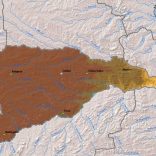Mozambique: Naparamas murder policemen in Nivenevene, Chiúre district - AIM report
Hundreds of driving licenses obtained through corruption

in file Club of Mozambique
At least 300 drivers’ licenses were obtained fraudulently between last year and this March at the delegations of Mozambique’s National Land Transport Institute (INATTER) in Maputo City and Province, according to a report in Wednesday’s issue of the daily paper “Noticias”.
The corrupt scheme where licenses are granted fraudulently by INATTER officials was uncovered during an internal audit. It was found that the rules for access to the examination rooms where candidates are tested on their theoretical knowledge of the highway code had been violated, allowing people who already have licenses to sit the test in the names of the real candidates.
INATTER spokesperson Vasco Tovela said at least 15 INATTER staff are suspected of involvement in this scheme. Three of them, in Maputo province, have faced disciplinary proceedings, and are now being prosecuted.
Tovela said that the data recently published by what “Noticias” coyly describes as “a Maputo based research centre” were not the work of its own research, but were based on the INATTER March audit.
The “research centre” is in fact the country’s main anti-corruption NGO, the Centre for Public Integrity (CIP), which published a report last week entitled “Corruption that costs lives: driving licenses on sale at INATTER”.
Clearly it was that CIP report which stimulated “Noticias” to contact INATTER, leading to Wednesday’s front page story.
The CIP report claims that 1,110 driving licenses (more than three times the figure of 300 mentioned by Tovela) were obtained fraudulently in Maputo and the neighbouring city of Matola in 2015 and the first quarter of this year. As an appendix to its report, CIP publishes the list of names of all those who purchased their driving licenses over this period (including their driving licence numbers, which should make it very easy for the police to identify and prosecute all of them).
INATTER has long recognized the existence of corruption in the attribution of driving licenses – which is why, in August 2014, in introduced a Multi-Media Integrated Examination System (SIEM) in Maputo and Matola (to be expanded to the rest of the country, if successful).
This system removes human examiners. The candidates answer questions about the theoretical side of driving on a computer touch screen. Since computers cannot be bribed, it was imagined that this would solve the problem of corruption.
The immediate result of the new system in 2014 was a massive failure rate. Prior to SIEM, 98 per cent of candidates passed the theory exam. After it was introduced, the pass rate fell to a miserable 24 per cent. The questions were the same – all that had changed was the replacement of a human examiner by a computer.
Seeing their source of money dry up, corrupt INATTER staff, CIP claims, began to sabotage the system. They switched computer cables, causing the system to crash, in the hope that the INATTER management would revert to manual exams.
When INATTER refused to abandon SIEM, the corrupt staff hit on the method of substituting the candidates. People who already knew all the answers took their places – although the real candidates might also show up, but merely for identification purposes.
The theory exam contains 25 questions on such matters as traffic rules, road signs, and civil and criminal responsibility in cases of traffic accidents. The exam lasts for 60 minutes, and in order to pass candidates must answer at least 18 of the questions correctly.
The corrupt staff were far too confident. Their replacement candidates answered all the questions in a few minutes and hardly ever made any mistakes. CIP mentions cases where the substitutes took just two minutes to complete the exam and only made one mistake.
Furthermore, closed circuit television was used in the exam rooms. The cameras thus clearly showed cases where the wrong people were sitting the exam. This was devastating evidence that the auditors could use.
CIP points out that corruption in granting driving licenses can have fatal effects, since if motorists have not truly passed their driving tests, they became a threat to their own lives and those of other road users.
According to the government’s figures, 22,722 people died on Mozambican roads between 1999 and 2014. It is suspected that these figures are incomplete and the World Health Organisation (WHO) estimated the number of fatalities in Mozambican traffic accidents in 2013 alone at an extraordinary 8,173.












Leave a Reply
Be the First to Comment!
You must be logged in to post a comment.
You must be logged in to post a comment.